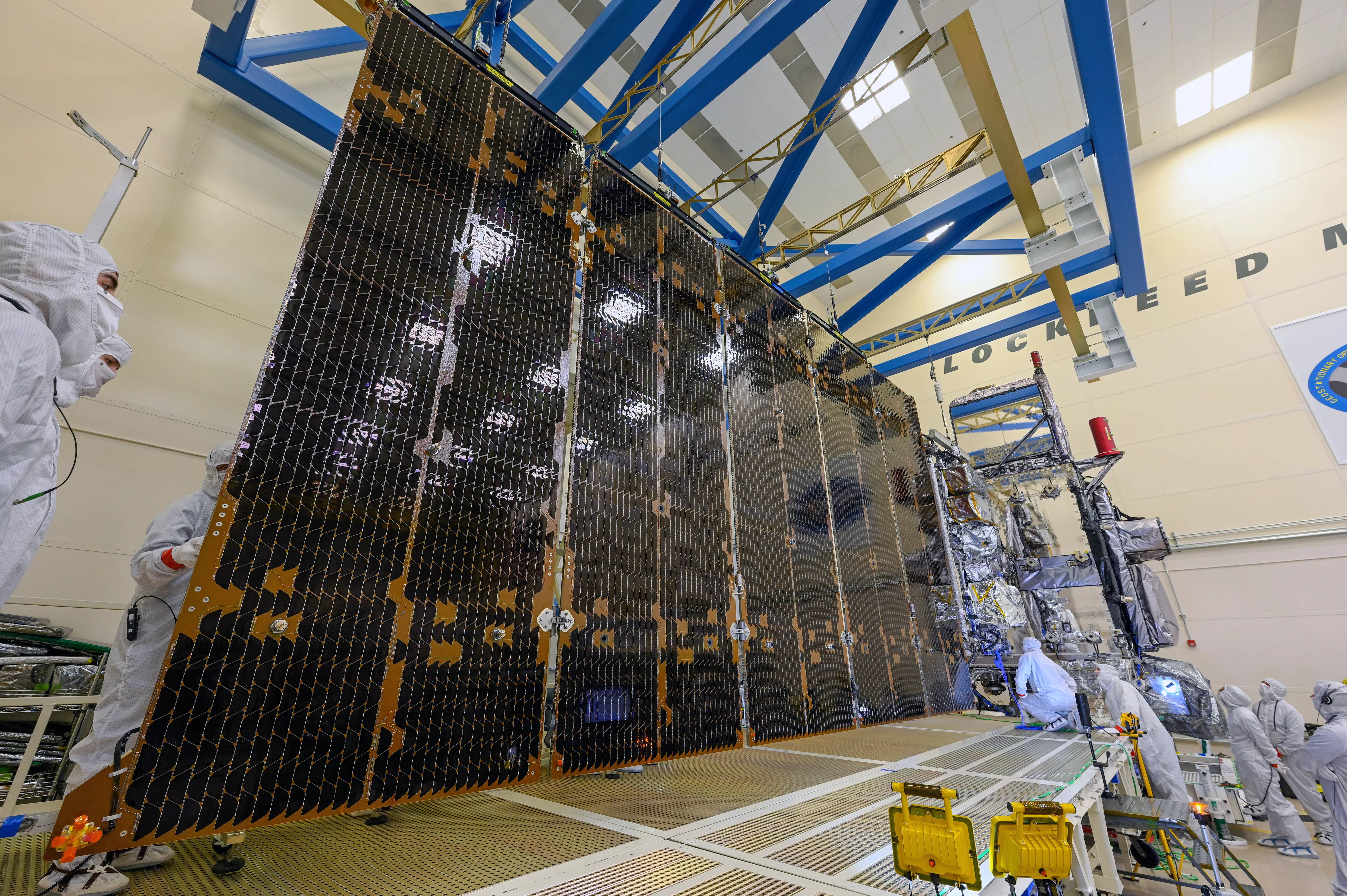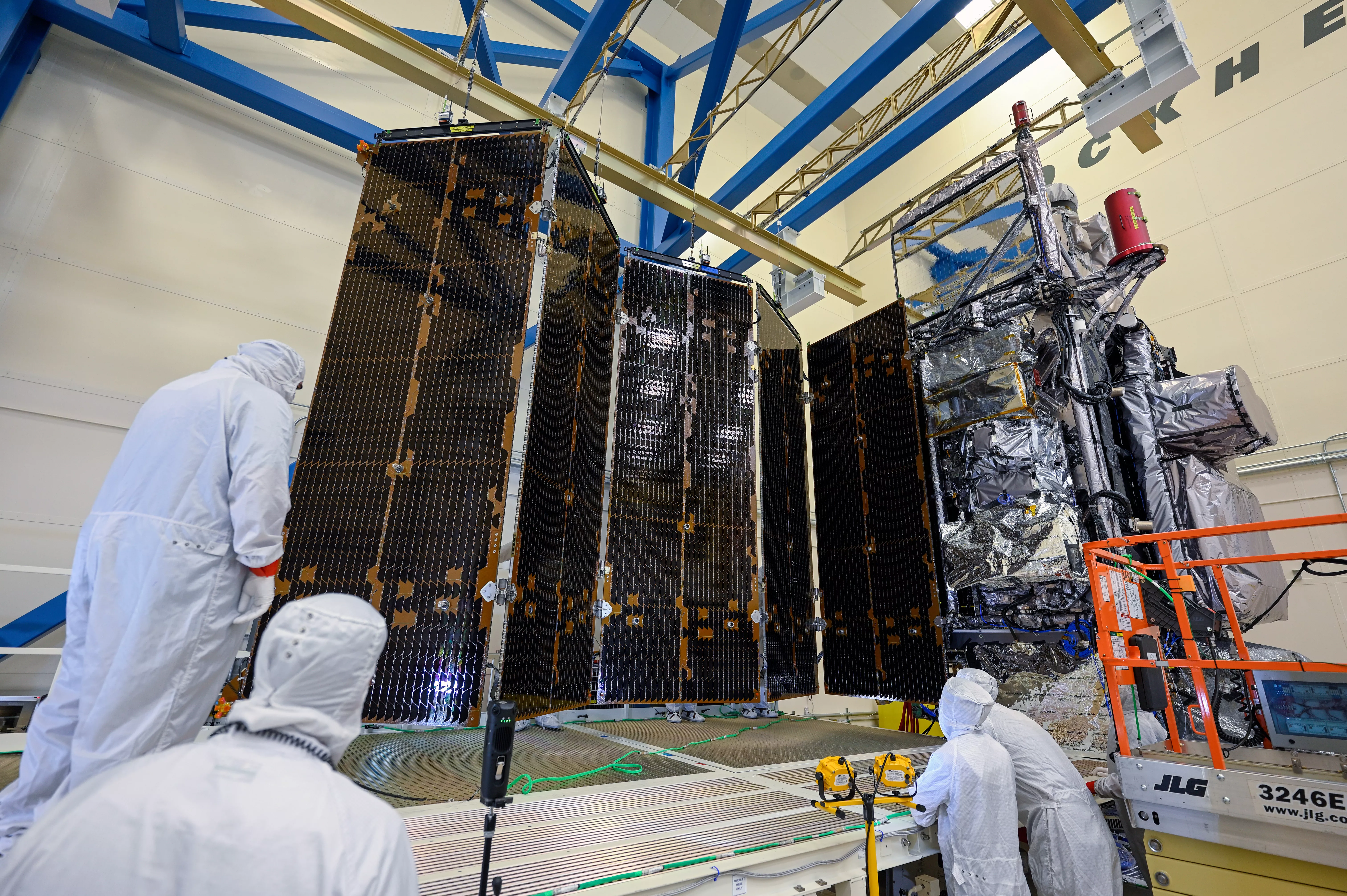
GOES-U, the fourth and final satellite in NOAA’s GOES-R Series, recently completed a successful test deployment of its solar array to ensure it will function properly in space.
This critical test verified that the satellite's large, five-panel solar array — which is folded up when the satellite is launched — will properly deploy when GOES-U reaches geostationary orbit. During this test, engineers unfurled the five panels on rails that simulated the zero-gravity environment of space. Each solar panel is approximately 13 feet tall by 4.5 feet wide and weighs approximately 45 pounds.

Once GOES-U reaches orbit, the deployed solar panels will form a single solar array wing that will rotate once per day to continuously point its photovoltaic (solar) cells toward the sun. The photovoltaic cells will convert energy from the sun into electricity to power the entire satellite, including the instruments, computers, data processors, sensors, and telecommunications equipment. The solar array will generate more than 5,000 watts of power for the satellite. This is equivalent to the power needed to run a central air conditioning system in your home.
The solar array was developed and built by Lockheed Martin at its Sunnyvale, California, facility and tested at Lockheed Martin’s facility in Littleton, Colorado, where GOES-U was assembled. GOES-U is scheduled to launch in April 2024.
The GOES-R Program is a collaborative effort between NOAA and NASA. NASA builds and launches the satellites for NOAA, which operates them and distributes their data to users worldwide. The satellites provide critical data for weather forecasts and warnings, detecting and monitoring environmental hazards like fire, smoke, fog, volcanic ash, and dust, and monitoring solar activity and space weather.
